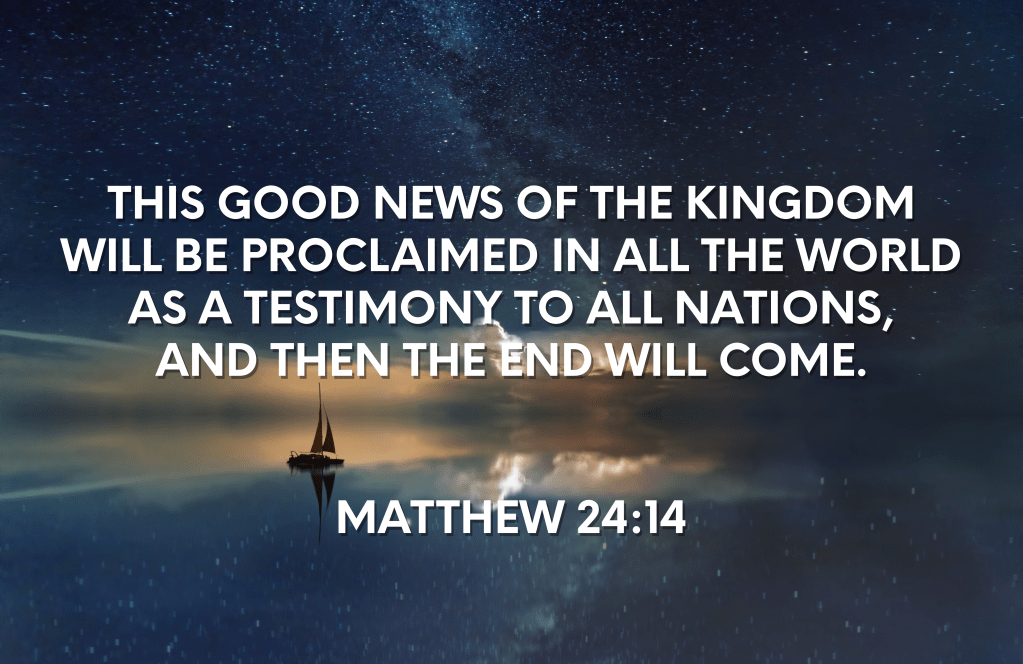Friday, May 8th, 2020

What comes to mind when you hear these two questions? If you thought of the worn patience of a child on a long journey, that’s what I intended. When I was young, I used to pester my poor parents with these questions on long road trips. They would assure me — time and again — that they would let me know when we were near our destination. After a while, though, I would resume asking the same questions. Sometimes it is hard for a child to just sit and wait, especially in the midst of uncertainty. That might be true for some adults, too.
“Are we almost there? When will we get there?”
These two questions are also on the mind of most of us as we read the Book of Revelation, and with good reason. Right up front, Revelation itself gives us ample reason to wonder when. The audience of Revelation is told they can expect a blessing if they listen and keep the words written therein. That’s what Revelation 1:3 says. The same verse then concludes with time-sensitive watch words: for the time is near. Thus the when? question appears at the very beginning of the book. We’re supposed to be asking it.
Someone might be tempted to cynicism here. The Book of Revelation was written almost two millennia ago. Nearly two thousand years ago, Revelation claimed that the time was near. Presumably, the original recipients of the Apocalypse believed that Jesus Christ would appear soon. He would be arriving for them anytime. “Sometime soon Jesus will come for us.” That’s the idea; right? That claim seems rather ridiculous now. It seems like a farce after two thousand years of waiting. How can it be taken with any seriousness?
It is indeed an important question. It even has its own technical terminology. In seminary-speak, it is called the delay of the parousia. The word parousia means appearance — the appearance of Christ, that is. But simply injecting a bit of academic terminology here is not particularly helpful. Just to identify it with some jargon does not resolve the inherent problem. Why hasn’t Jesus appeared after two thousand years, especially when Revelation says “the time is near”? Why the long delay? Many people reject the reliability not only of Revelation but the entire New Testament on this very point. John and even Jesus were wrong, they say.

Allow me to push back against the cynicism, if I may. The Book of Revelation actually anticipates the delay of Christ’s appearance. It does. I’ll show you exactly where it does in a few sentences. This same delay is also anticipated elsewhere in the New Testament.
The delay of the parousia can be identified as the entirety of chapter seven… period. An explanation is in order here. Through chapters five and six, we see Christ, the Lion/Lamb, breaking open six of seven document seals. As each of the document seals is broken open, one peculiarity after another is unleashed. The sixth seal depicts human horror at the disintegration of the cosmos and the apparent end of the world. It seems like THE END, except at the very end, it’s not. Surprise! We’re not there yet. The hammer never falls. The climax never comes. Instead, chapter seven comes. Behold, the delay of the parousia, per the Book of Revelation.
Rather than THE END, the Book of Revelation presents something previously unanticipated: the purpose and mission of the Church. This begins at chapter seven. Christ’s appearance is postponed until the mission of the Church is accomplished. The Book of Revelation shows all this, symbolically.
Since I constrain myself to a word limit in these blog posts, I will have to hit pause for now, just like the Book of Revelation does at the end of chapter six. I am well aware that I am leaving a lot of questions hanging unanswered and a lot of material unexplained. Stay tuned, please. We’re not there yet, but we’re almost there. The time is near; even if it is not here quite yet.
